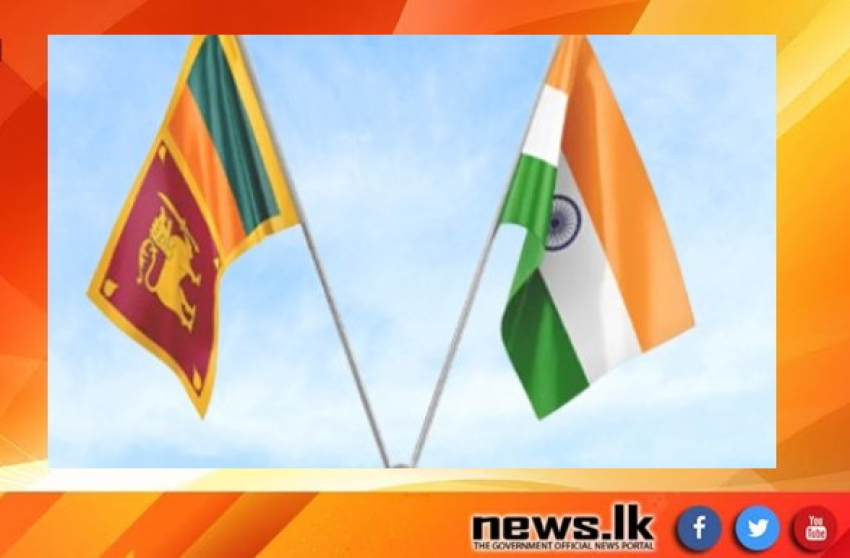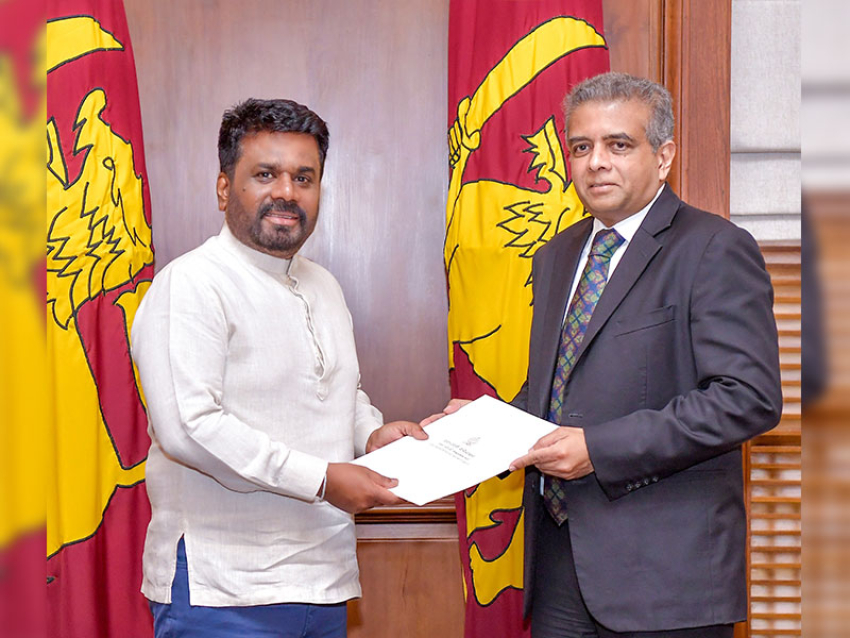2. Both leaders reiterated their firm commitment to, and confidence in democracy, stability and economic recovery in Sri Lanka, and stressed the significance of India’s continued support and investment for sustainable, equitable and stable growth which will benefit all segments of Sri Lankan society in all parts of the country, and also promote reconciliation.
3. The two leaders agreed that India’s sustained and rapid economic growth, and technological advancement coupled with the current phase of stabilisation and economic recovery, reconstruction and growth in Sri Lanka, provides a unique opportunity to forge a closer and deeper bilateral economic partnership between the two countries and enhance growth in the Indian Ocean Region. Further, the leaders underscored the unparalleled advantages afforded by civilizational ties, geographical proximity, cultural connect and age-old goodwill between the peoples of the two countries and reaffirmed their endeavour to harness existing synergies and complementarities in a manner that brings shared and sustainable economic prosperity.
4. To this end, the leaders underlined the cardinal importance of promoting and strengthening connectivity in all its dimensions as the key enabler. Accordingly, both leaders have decided:
I. Maritime connectivity:
a. To cooperate in development of ports and logistics infrastructure at Colombo, Trincomalee and Kankesanthurai with an aim to consolidate regional logistics and shipping, as per mutual understanding;
b. To resume passenger ferry services between Nagapattinam in India and Kankesanthurai in Sri Lanka and work towards early resumption of ferry services between Rameshwaram and Talaimannar, and other mutually agreed places.
II. Air connectivity:
a. That resumption of flights between Jaffna and Chennai have enhanced people-to-people ties and agreed to further expand it to Colombo as well as explore connectivity between Chennai and Trincomalee, Batticaloa and other destinations in Sri Lanka;
b. To encourage and strengthen investment and cooperation in civil aviation, including augmentation of airport infrastructure at Palaly for greater economic benefits to the people;
III. Energy and Power connectivity:
a. That conclusion of MoU on cooperation in developing renewable energy would develop Sri Lanka’s significant renewable energy potential, including offshore wind and solar, thus enabling Sri Lanka achieve its target of generating 70% of power requirements from renewable energy sources by 2030;
b. To establish a high capacity power grid interconnection between India and Sri Lanka to enable bidirectional electricity trade between Sri Lanka and other regional countries, including the BBIN countries, which has the potential to not only bring down the costs of electricity in Sri Lanka but also help create a valuable and dependable source of foreign exchange for Sri Lanka;
c. To expedite implementation of understanding reached on Sampur Solar power project and LNG infrastructure, and explore cooperation in green hydrogen and green ammonia through use of innovative technologies with an aim to increase renewable energy mix in power generation of Sri Lanka.
d. That ongoing cooperation in development of Trincomalee Tank Farms is a reflection of our endeavour to develop mutually beneficial cooperation projects in Trincomalee area, and agreed to further develop Trincomalee as a national and regional hub of industry, energy and economic activity on the basis of mutual understanding;
e. To cooperate for construction of a multi-product petroleum pipeline from Southern part of India to Sri Lanka with an aim to ensure affordable and reliable supply of energy resources to Sri Lanka;
f. To undertake mutually agreed joint exploration and production of hydrocarbons in Sri Lanka’s offshore basins with an aim to develop Sri Lanka’s upstream petroleum sector.
IV. Trade, Economic and Financial Connectivity:
a. That salience of bilateral trade and economic engagements was significantly demonstrated during COVID pandemic and economic crisis of Sri Lanka, and agreed to facilitate mutual investments through, inter alia, policy consistency, promoting ease of doing business and fair treatment of each other’s investors;
b. To facilitate investments from India in the divestment of Sri Lankan State-owned Enterprises and in manufacturing/economic zones in various sectors in Sri Lanka;
c. To undertake discussions on Economic and Technology Cooperation Agreement with an aim to comprehensively enhance bilateral trade and investments in new and priority areas;
d. That decision to designate INR as currency for trade settlements between the two countries has forged stronger and mutually-beneficial commercial linkages, and agreed to operationalise UPI based digital payments for further enhancing trade and transactions between businesses and common people.
e. That India’s rapid digitalisation is an important force-multiplier for ongoing transformational changes in India, both in economic development and governance, and agreed to leverage India’s Digital Public Infrastructure in accordance with Sri Lanka’s requirements and priorities towards effective and efficient delivery of citizen-centric services to the people of Sri Lanka;
V. People-to-people Connectivity:
a. To promote awareness and popularize India’s Buddhist circuit, and Ramayana trail as well as ancient places of Buddhist, Hindu and other religious worship in Sri Lanka for enhancing tourism;
b. To explore cooperation between educational institutions on both sides including through establishment of new higher education and skilling campuses in Sri Lanka in accordance with Sri Lanka’s requirements and priorities;
c. To expand cooperation between research and academic institutes in areas of mutual interests such as agriculture, aquaculture, IT, business, finance and management, health and medicine, earth and marine sciences, oceanography, space applications, as well as history, culture, languages, literature, religious studies and other humanities; and
d. To establish land connectivity between Sri Lanka and India for developing land access to the ports of Trincomalee and Colombo, propelling economic growth and prosperity in both Sri Lanka and India, and further consolidating millennia old relationship between the two countries. A feasibility study for such connectivity will be conducted at an early date.
5. Both the leaders directed respective officials concerned to expedite realisation of this shared vision, which will not only impart long-term direction and significant momentum to bilateral cooperation for growth and prosperity in both countries and in the wider region, but also set the future direction of a dynamic India-Sri Lanka relationship, founded on enhanced mutual confidence and trust.
PMD



















